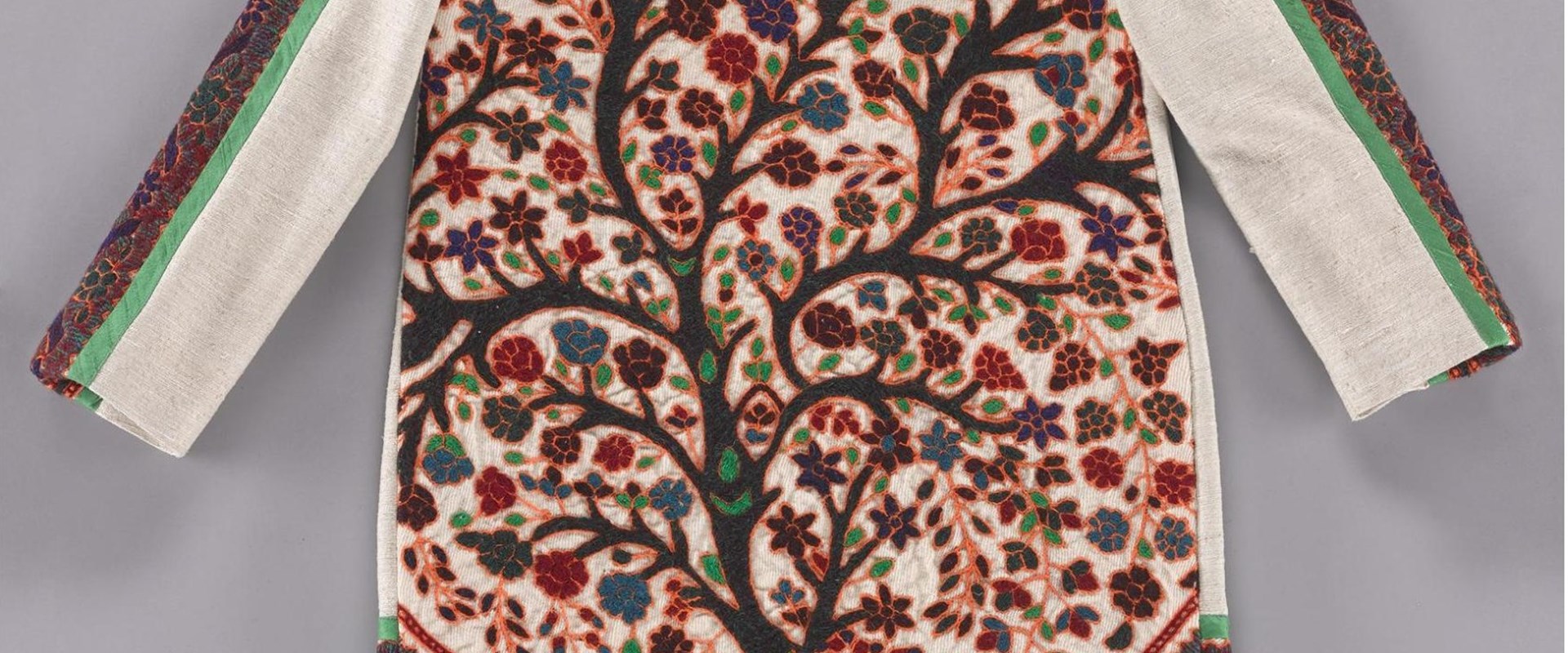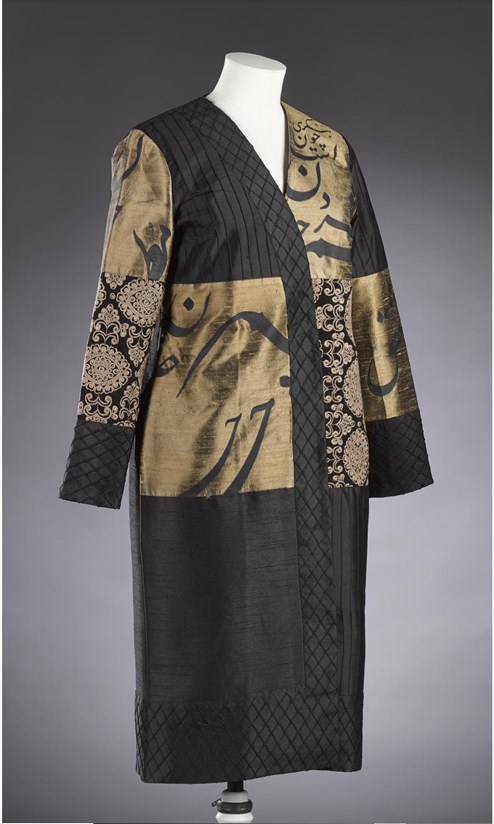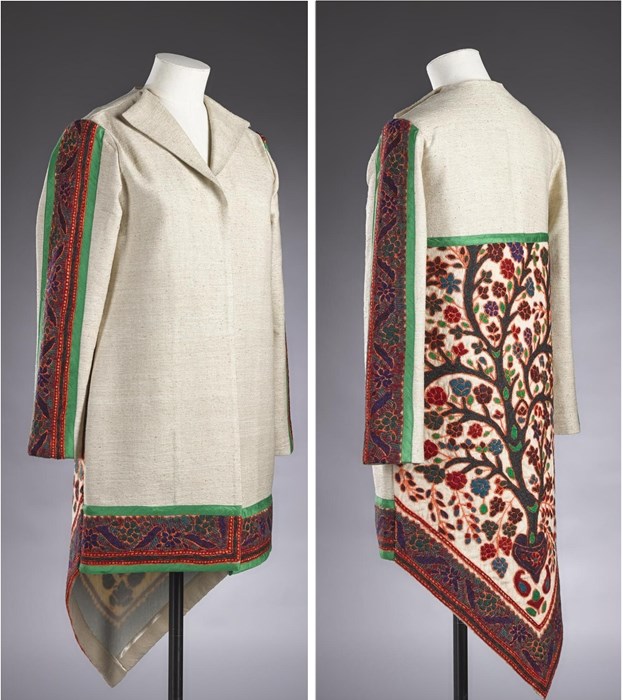Key in a search term below to search our website.
Key in a search term below to search our website.

Zarir brand was established in 2002 by Rana Modabber and Ghazal Torki Sharifabadi. Exclusively made for the Edinburgh Iranian Festival, their collection draws on the fabrics and decorative techniques of the different regional traditions of Iran.
This fitted silk coat captivates by its contrasting panels of black and gold. It is closed at the front with the right side overlapping. Straight and cross-hatched quilting down the front and along the bottom gives texture to the plain black panels.
With the delicate floral embroidery on the right sleeve and the bottom left body panel, Torki and Modabber reference golabtun duzi, a style of embroidery characteristic of Bandar Abbas, a sea-port in the south of Iran. Golabtun duzi originally includes mirrors, which the designers replaced here with sequins.
The main feature of this coat is the use of screen-printed Persian calligraphy on a golden background. Written in the nastaliq style, the lines on the left shoulder read
"Wisdom is the eye of the soul, therefore look"
خرد چشم جان است چون بنگری
This verse is taken from the preface to Ferdowsi’s Shahnameh, or Book of Kings, a narrative poem telling the history of the Iranian kings. In this introduction, Ferdowsi elaborates understanding and judgement as a means of guidance in human life. Knowledge is considered to be the guardian of our soul.
The words on the left sleeve are by another poet, Hafez of Shiraz.
“Never have I found a sound more beautiful than that of the word love.”
از صدای سخن عشق ندیدم خوش تر

Above: Black and gold coat © Zarir. Accession number V.2015.14.
“This art form is the result of visions of girls and women who brought their colourful dreams to life as needlework on a piece of fabric.- Ghazal Torki
This jacket is made from raw cotton with a straight cut at the front and a triangular bottom at the back. Asymmetry is a feature of contemporary urban women's dress in Iran.
In addition, this piece surprises by the large embroidered tree on its back. Used also for the borders, this kind of embroidery is typically executed on a woollen background. Called pateh duzi, it is characteristic of the city of Kerman in the southeast of Iran. For the designers, pateh evokes the image of a flowering garden. From the range of motifs created by the women embroiderers they chose the tree to represent this particular technique.

Above: Front and reverse of the white coat © Zarir. Accession number V.2015.13.